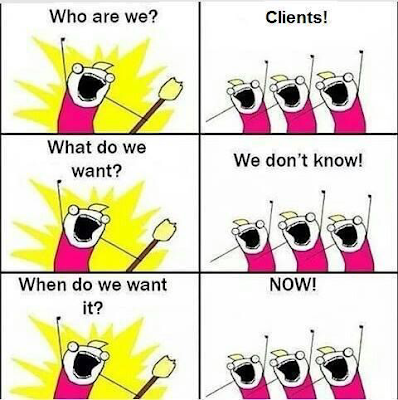 Have you ever participated in a scavenger hunt? If so, then you
know what it’s like to go from place to place and have to find the various
items on the list- all in hopes of getting them all before the other
participants do.
Have you ever participated in a scavenger hunt? If so, then you
know what it’s like to go from place to place and have to find the various
items on the list- all in hopes of getting them all before the other
participants do.
This is what it can be like sometimes for busy professionals who
need things – information, parts, photographs or whatever the need be.
That’s where having an organizational “single point of contact”
can really help manage the project’s flow of needs and help the project meet
the deadline.
How so, you may be asking?
Well, think of it like the old time grocery delivery boy. In those
days, someone who was either too busy to shop for themselves or perhaps
infirmed and couldn’t leave home still had to eat, right? So, grocers offered a
service to customers allowing them to phone in their grocery lists and a few
hours later a delivery boy would be knocking on the customer’s door ready to
exchange the sacks of groceries for cash. (I know; that’s a service that went
the way of doctors’ house calls and the Dodo bird. But it makes a great analogy
to the single point of contact.)
In today’s world there is a glut of information deeply embedded in
bureaucracies that one has to wade through to get it. Employees could spend
hours or even days just locating the right person to talk to about something –
particularly when interactions go across business units or companies.
 Hence, it saves both time and budget dollars to flow things – as much
as makes sense, at least – through single points of contact. Doing so will allow
your employees to “one stop shop” as much as possible and get back to what you’re
paying them to do. They simply call, email or IM the appropriate single point
of contact, tell them the need and get back to doing what they do best. The
single point of contact takes the search process from there. When they have the
item(s) requested, they simply flow them back to the appropriate requester.
Hence, it saves both time and budget dollars to flow things – as much
as makes sense, at least – through single points of contact. Doing so will allow
your employees to “one stop shop” as much as possible and get back to what you’re
paying them to do. They simply call, email or IM the appropriate single point
of contact, tell them the need and get back to doing what they do best. The
single point of contact takes the search process from there. When they have the
item(s) requested, they simply flow them back to the appropriate requester.
Sounds logical, doesn’t it? It works. Trust
me. I’d encourage you to try it –
I think you’ll enjoy the many benefits of the concept. I've "done this for money" myself and
I've also worked other projects involving SPCs. It's a wonderful project
management concept to employ.




